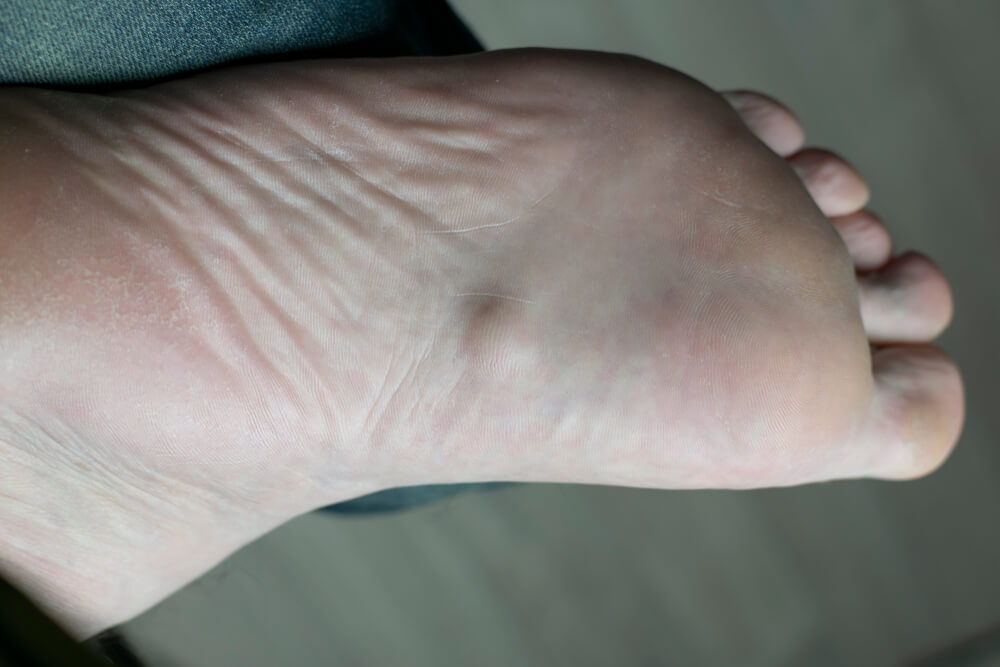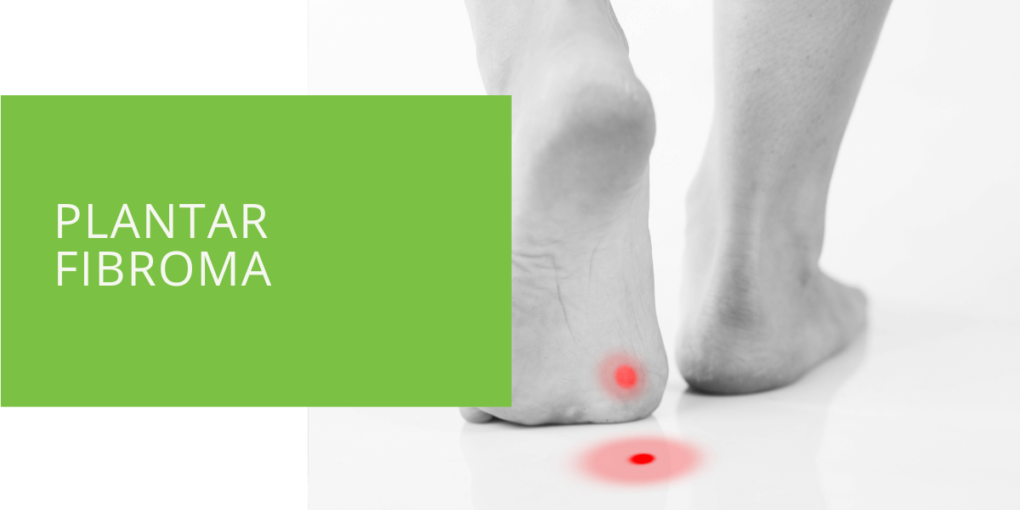Effective Treatment Options for Plantar Fibroma
Plantar Fibroma can be a debilitating condition that can significantly impact one's quality of life. From painful steps to limited mobility, it can be frustrating to live with this condition. Fortunately, it is possible to manage the symptoms and regain control of your life with the right treatment and care.
This comprehensive guide aims to provide a detailed understanding of Plantar Fibroma, including its causes, symptoms, and effective treatment options. Whether you are experiencing discomfort in your foot or ankle or struggling to find relief from this condition, you will find the information you need to take control of your health and improve your overall well-being. From medical treatments to holistic approaches, this guide covers everything you need to know to manage your Plantar Fibroma symptoms and live a happier, healthier life.
Key Takeaways
- Plantar Fibromas are non-cancerous fibrous nodules that develop in the plantar fascia, causing symptoms like pain and discomfort in the foot arch.
- Diagnosis involves consulting a podiatrist, utilizing imaging techniques like MRI and sometimes performing a biopsy for confirmation.
- Treatment options range from non-invasive approaches like orthotic inserts and physical therapy to minimally invasive procedures, such as steroid injections and cryotherapy, and, in severe cases, surgical interventions like fasciotomy and excision surgery. Home remedies and self-care can complement these treatments, and recovery requires following healthcare provider instructions closely. Expert insights emphasize the importance of personalized care in managing Plantar Fibromas.
Plantar Fibroma: What You Need to Know
Definition and Characteristics
Plantar Fibromas are non-cancerous fibrous nodules that manifest within the plantar fascia, a band of tissue that runs along the arch of your foot. These fibromas can develop anywhere in the plantar fascia but are most commonly found in the arch or the bottom of the foot. While typically less than an inch, they can sometimes grow to several centimeters in diameter.
Plantar Fibromas are essentially bundles of fibrous tissue that can form in the foot's arch. They appear as small lumps or nodules beneath the skin, often causing discomfort or pain, particularly when applying pressure.
Identifying the Condition
A crucial aspect of managing Plantar Fibromas is identifying the condition in its early stages. This allows for timely intervention and appropriate treatment.
Early identification is vital as it enables healthcare professionals to develop a suitable treatment plan before the fibroma progresses. Symptoms may start with a small, painless lump, which can become increasingly painful with time and activity.
Symptoms of a Plantar Fibroma
Plantar Fibromas often manifests with various symptoms that can indicate the condition's presence.
The symptoms of Plantar Fibroma include the development of a firm and fibrous lump or knot in the foot's arch. This lump may initially be painless but can cause discomfort, particularly during prolonged standing or walking activities. The fibroma can exert more pressure as it grows, resulting in increased pain and discomfort.
Diagnosing a Plantar Fibroma
Accurate diagnosis of Plantar Fibroma is crucial to initiate the most suitable treatment. Diagnosis typically involves a series of steps.
Consultation with a Podiatrist
When you suspect a Plantar Fibroma or experience symptoms related to it, seeking professional guidance is the first step in the diagnostic process.
During your consultation with a podiatrist, they will thoroughly examine your foot. This examination may involve discussing your medical history, identifying any pain or discomfort, and assessing the size and location of the fibroma.
Imaging Techniques
To confirm the presence of a Plantar Fibroma and rule out other potential conditions, your healthcare provider may recommend various imaging tests.
Imaging tests, such as Magnetic Resonance Imaging (MRI), are valuable tools in diagnosing Plantar Fibromas. An MRI provides a detailed view of the fibroma and its location within the foot, aiding in accurate diagnosis and treatment planning.
Biopsy
Sometimes, a biopsy may be necessary to evaluate the fibroma's tissue composition further and ensure an accurate diagnosis.
A biopsy involves taking a small tissue sample from the fibroma for examination under a microscope. This step helps confirm that the lump is a Plantar Fibroma and not another, more concerning condition.

Treatment of Plantar Fibroma
The treatment of Plantar Fibroma is tailored to the individual and varies based on factors such as the fibroma's size, location, and severity. Treatment options can be broadly categorized into three main approaches.
Non-Invasive Solutions
Non-invasive treatments focus on minimizing discomfort and promoting mobility without surgical intervention.
Orthotic Inserts: Customized Support
Orthotic inserts are custom-made to provide additional support to the arch of your foot, redistributing pressure away from the fibroma and reducing discomfort.
Customized orthotics are crafted to fit the unique contours of your foot, ensuring optimal support. These inserts can significantly alleviate the pain associated with Plantar Fibroma by providing the necessary arch support.
Physical Therapy: Strengthening and Mobility
Physical therapy plays a crucial role in improving the flexibility of the plantar fascia, which can lead to reduced pain and pressure on the fibroma.
Physical therapists design personalized exercise regimens to address your specific needs. These exercises focus on stretching and strengthening the plantar fascia, helping you regain mobility and alleviate pain.
Medications: Pain Management
Over-the-counter pain relievers or prescription medications may be recommended to manage pain and discomfort caused by the fibroma.
While medications can provide temporary relief from pain, it's essential to consult with your healthcare provider before using any medication to ensure it's safe and suitable for your condition.
Minimally Invasive Procedures
Minimally invasive procedures aim to address the fibroma's symptoms and reduce discomfort with less extensive intervention.
Steroid Injections: Reducing Inflammation
Corticosteroid injections are administered directly into the fibroma, reducing inflammation and relieving pain.
Steroid injections have been effective in reducing the inflammation associated with Plantar Fibroma. These injections can provide long-lasting relief, but multiple sessions may be required for continued effectiveness.
Cryotherapy: Targeted Cold Therapy
Cryotherapy involves freezing the fibroma, leading to its shrinkage or complete elimination.
This minimally invasive procedure is performed in a clinical setting and is relatively low-risk. Cryotherapy can be particularly effective in reducing the size and symptoms of Plantar Fibroma.
Shockwave Therapy: Promoting Healing
Extracorporeal Shockwave Therapy (ESWT) utilizes high-energy shockwaves to stimulate the body's natural healing response, potentially breaking down the fibrous tissue in the fibroma.
ESWT has shown promise in addressing the discomfort associated with Plantar Fibroma. Promoting healing and tissue regeneration offers an alternative treatment option for some individuals.
Surgical Intervention
Surgical intervention is typically reserved for severe cases of Plantar Fibroma or situations where non-invasive and minimally invasive treatments have been ineffective.
Fasciotomy: Release of Tissue
A fasciotomy involves releasing the tension in the plantar fascia, alleviating pressure on the fibroma.
This surgical procedure can relieve cases where the fibroma is causing significant pain and other treatments have not been successful. By releasing the plantar fascia, pressure on the fibroma is reduced.
Excision Surgery: Removal of Fibroma
Complete surgical removal of the fibroma may be necessary in some cases, especially when the fibroma is giant or causing severe discomfort.
Excision surgery involves removing the fibroma along with the surrounding tissue. Recovery from this procedure may take several weeks but can lead to long-term relief.

Home Remedies and Self-Care
In addition to medical treatment, you can take steps at home to alleviate pain and discomfort caused by Plantar Fibroma.
Self-care measures can complement medical treatment and enhance your overall well-being. Here are some self-care strategies to consider:
- Proper Footwear: Wearing shoes with adequate arch support can reduce pressure on the fibroma and minimize discomfort.
- Stretching: Regularly stretching your plantar fascia can improve flexibility and alleviate pain.
- Rest and Ice: Giving your foot time to rest and applying ice can reduce inflammation and relieve discomfort.
Recovery and Post-treatment Care
Recovery from Plantar Fibroma treatment can vary depending on the chosen approach. Following your healthcare provider's instructions carefully during this phase is crucial.
The recovery process involves gradually resuming physical activity and weight-bearing exercises. Monitoring the surgical site for signs of infection or complications is essential. Continuing any prescribed medications or orthotic use as directed by your healthcare provider is also vital for a successful recovery.
Expert Insights
At ePodiatrists, our team of experienced podiatrists has a wealth of knowledge and expertise in diagnosing and treating Plantar Fibromas. We have witnessed the positive impact of various treatment options and have helped numerous patients regain their foot and ankle health.
Our commitment to providing individualized care means that we tailor treatment plans to meet each patient's unique needs. We understand that Plantar Fibromas can be challenging to manage, but relief is achievable with the right guidance and treatment.
Conclusion
Plantar Fibromas can significantly affect your quality of life, causing pain and discomfort in your feet. Early diagnosis and appropriate treatment are crucial for managing this condition effectively.
Whether you are experiencing symptoms or have already been diagnosed with Plantar Fibroma, taking proactive steps towards treatment is essential. Don't allow Plantar Fibromas to limit mobility or hinder your daily activities.
If you suspect you have a Plantar Fibroma or are struggling with foot pain, we encourage you to take action today. Schedule an appointment with ePodiatrists to explore your treatment options and embark on a pain-free, active lifestyle. Your foot and ankle health are our top priorities, and we are here to support you every step of the way.
FAQ
How do you get rid of a plantar fibroma?
To effectively get rid of a plantar fibroma, various treatment options are available, depending on the size and severity of the fibroma. Non-invasive solutions like orthotic inserts and physical therapy, minimally invasive procedures such as steroid injections and cryotherapy, or surgical interventions like fasciotomy and excision surgery can be recommended by a healthcare provider. The treatment choice should be discussed with a podiatrist based on your condition.
What happens if a plantar fibroma is left untreated?
If a plantar fibroma is left untreated, it can increase in size, causing more pain and discomfort. Ignoring the condition may also result in limitations in daily activities due to foot pain. Early diagnosis and appropriate treatment are essential to manage plantar fibromas effectively.
How do you get rid of a plantar fibroma naturally?
While there are no guaranteed natural remedies to eliminate a plantar fibroma, you can take self-care measures to alleviate pain and discomfort. These may include wearing shoes with proper arch support, regularly stretching the plantar fascia, and applying rest and ice therapy. It's important to note that natural remedies may provide relief but are not a substitute for professional medical advice and treatment, particularly if the fibroma is causing significant discomfort. Consultation with a podiatrist is recommended for personalized guidance and treatment options.

